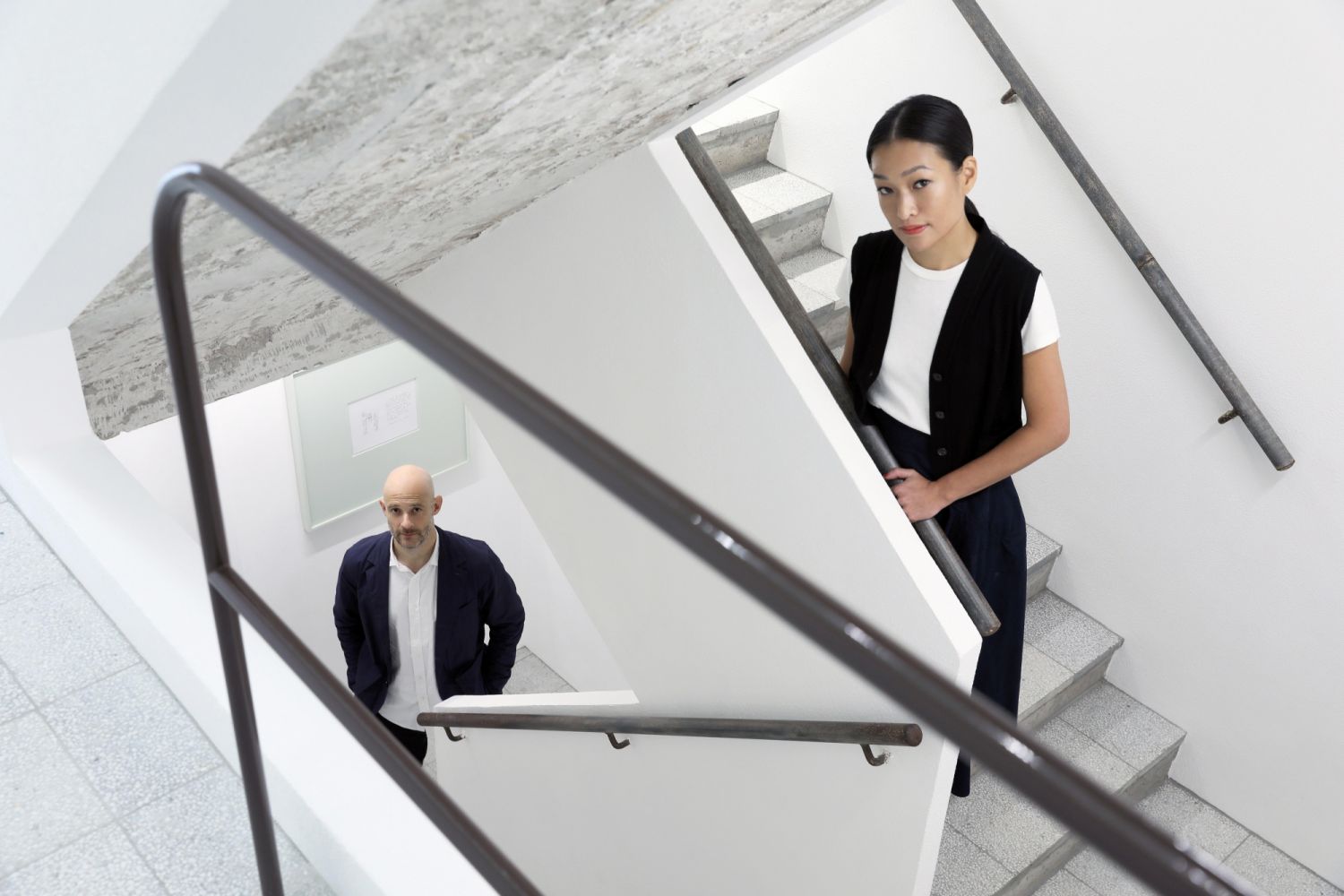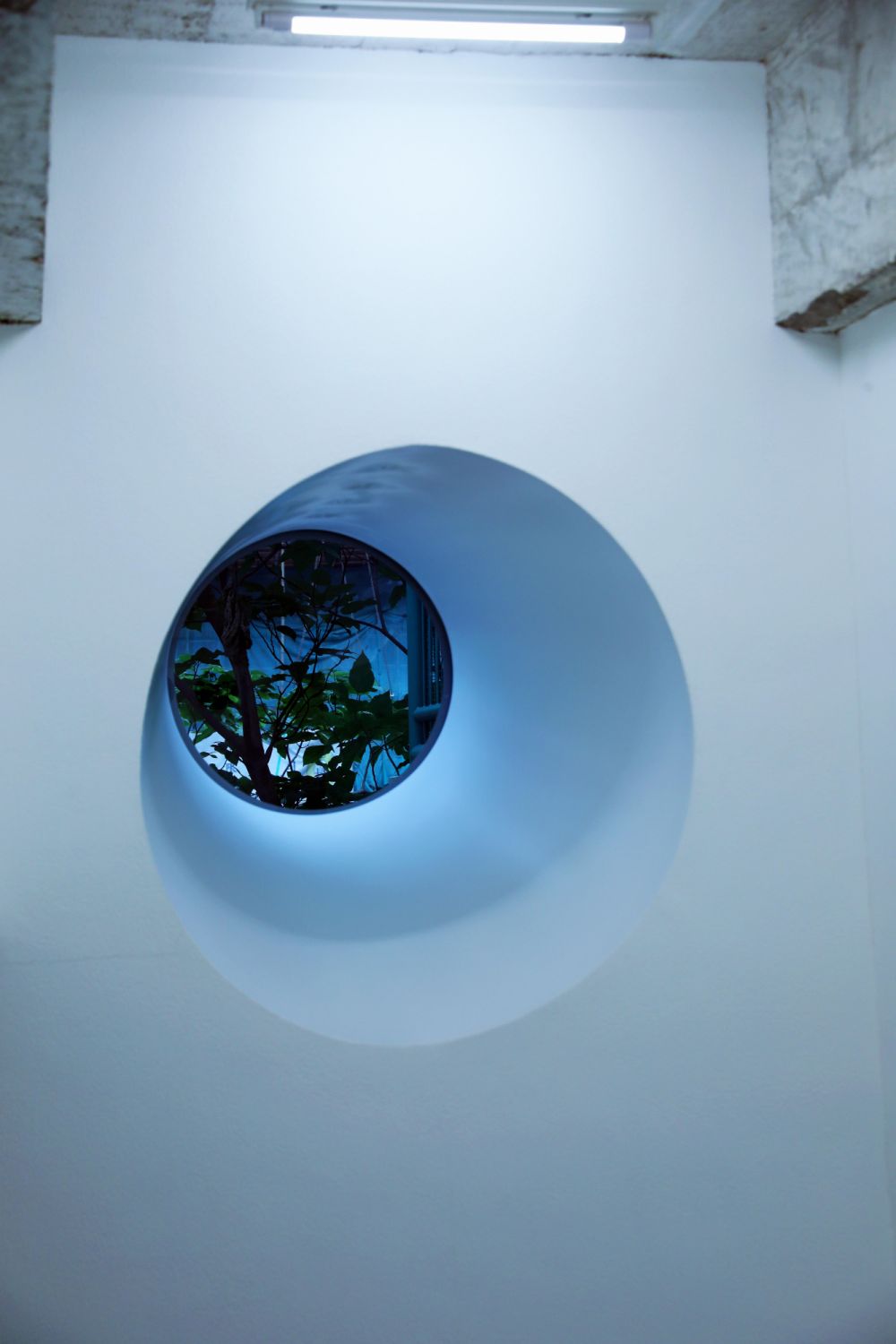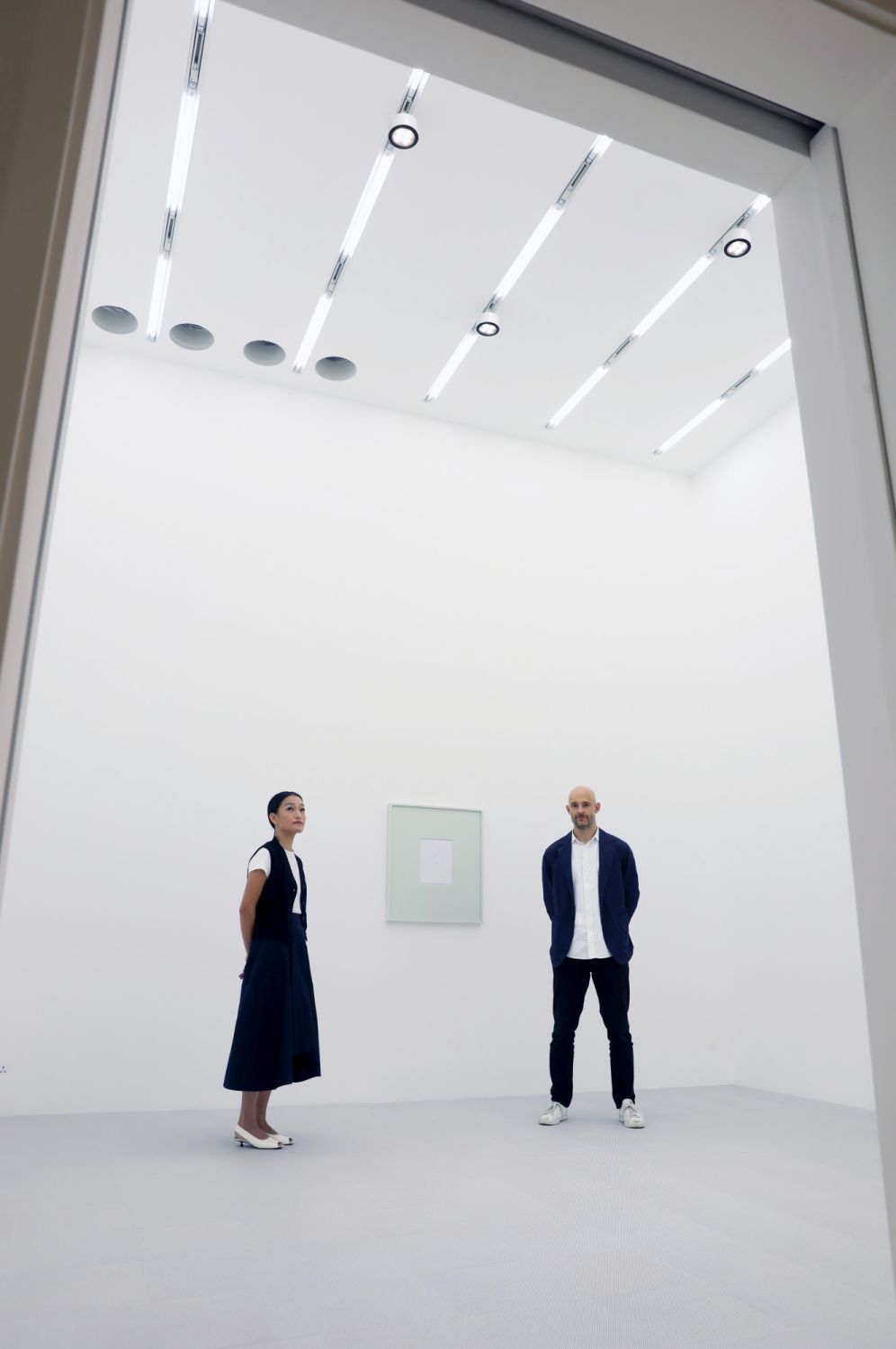After many delays, the couple open their second gallery space in Hong Kong, doubling down on their commitment to and investment in Hong Kong’s art scene
Thank You, Next took up the ground floor of a residential building on the brink of demolition in Jordan. Inspired by the Ariana Grande hit song of the (phonetically) same title, the exhibition curated by architect Natasza Minasiewicz, which ran from October 21 to December 3, featured a large totemic structure composed of a stack of coring samples. These ring-shaped, mostly concrete samples were extracted from the walls and floors of buildings under renovation around the city, including a small 1960s housing complex near Wan Chai’s Star Street precinct. The once decrepit building is now home to Kiang Malingue’s new gallery space.
“We wanted to assert our Hong Kong roots in a neighbourhood that reflected Hong Kong’s multifaceted spirit and culture,” says Edouard Malingue, one half of the couple behind the eponymous Kiang Malingue gallery. “In 2019, we came across a tall walk-up building at 10 Sik On Street, tucked away in Wan Chai, and fell in love with it.”

Until April 2022, the business was known as Edouard Malingue Gallery; last year, the couple renamed it Kiang Malingue, incorporating Malingue’s wife and business partner, Lorraine Kiang, and officially honouring their partnership.
They had opened the gallery in 2010 in a 1,600 sq ft space at 8 Queens Road Central, inaugurating the space with a Picasso exhibition, and moving to a larger space on Des Voeux Road in 2015. Escalating rents drove the couple out of Central district in 2020, so they headed to an industrial warehouse in Tin Wan’s Blue Box Factory building to open a space showcasing works by emerging and established contemporary Asian artists. After many bureaucratic and pandemic-induced delays, they were able to open the new location in late October 2022. Their trajectory is reflective of the need to constantly adapt to endure the city’s quick-paced and ever-changing nature, as well as the growth of Hong Kong’s art scene and the gallery’s programme.





